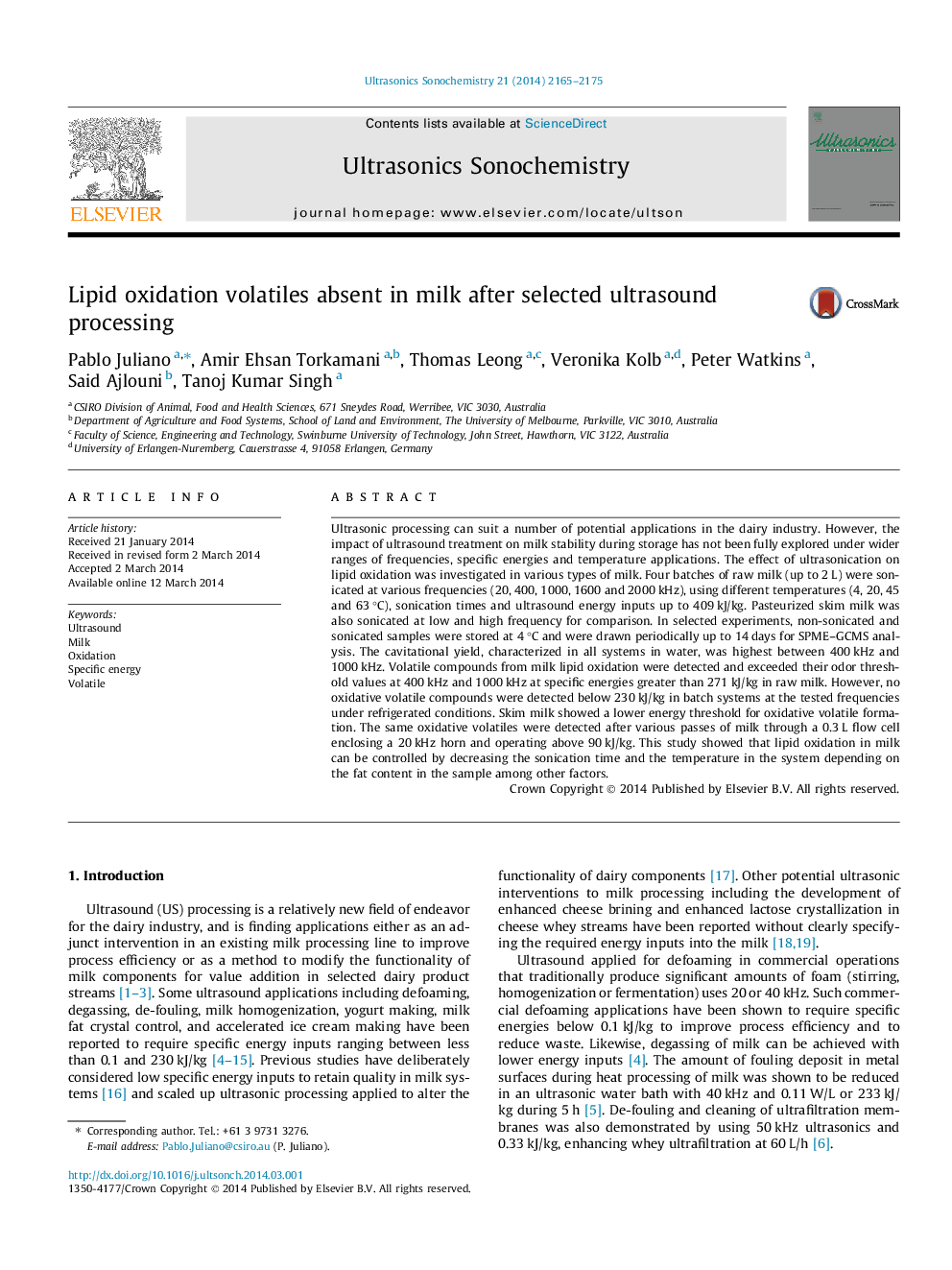| کد مقاله | کد نشریه | سال انتشار | مقاله انگلیسی | نسخه تمام متن |
|---|---|---|---|---|
| 1265078 | 972193 | 2014 | 11 صفحه PDF | دانلود رایگان |
• Formation of oxidative volatiles was explored at various ultrasonic conditions in milk.
• Lipid oxidation in milk depended on the specific energy input and frequency.
• Pressurized low frequency systems promoted lipid oxidation.
• Oxidative volatile formation was more marked in skim milk than in raw milk.
Ultrasonic processing can suit a number of potential applications in the dairy industry. However, the impact of ultrasound treatment on milk stability during storage has not been fully explored under wider ranges of frequencies, specific energies and temperature applications. The effect of ultrasonication on lipid oxidation was investigated in various types of milk. Four batches of raw milk (up to 2 L) were sonicated at various frequencies (20, 400, 1000, 1600 and 2000 kHz), using different temperatures (4, 20, 45 and 63 °C), sonication times and ultrasound energy inputs up to 409 kJ/kg. Pasteurized skim milk was also sonicated at low and high frequency for comparison. In selected experiments, non-sonicated and sonicated samples were stored at 4 °C and were drawn periodically up to 14 days for SPME–GCMS analysis. The cavitational yield, characterized in all systems in water, was highest between 400 kHz and 1000 kHz. Volatile compounds from milk lipid oxidation were detected and exceeded their odor threshold values at 400 kHz and 1000 kHz at specific energies greater than 271 kJ/kg in raw milk. However, no oxidative volatile compounds were detected below 230 kJ/kg in batch systems at the tested frequencies under refrigerated conditions. Skim milk showed a lower energy threshold for oxidative volatile formation. The same oxidative volatiles were detected after various passes of milk through a 0.3 L flow cell enclosing a 20 kHz horn and operating above 90 kJ/kg. This study showed that lipid oxidation in milk can be controlled by decreasing the sonication time and the temperature in the system depending on the fat content in the sample among other factors.
Journal: Ultrasonics Sonochemistry - Volume 21, Issue 6, November 2014, Pages 2165–2175
